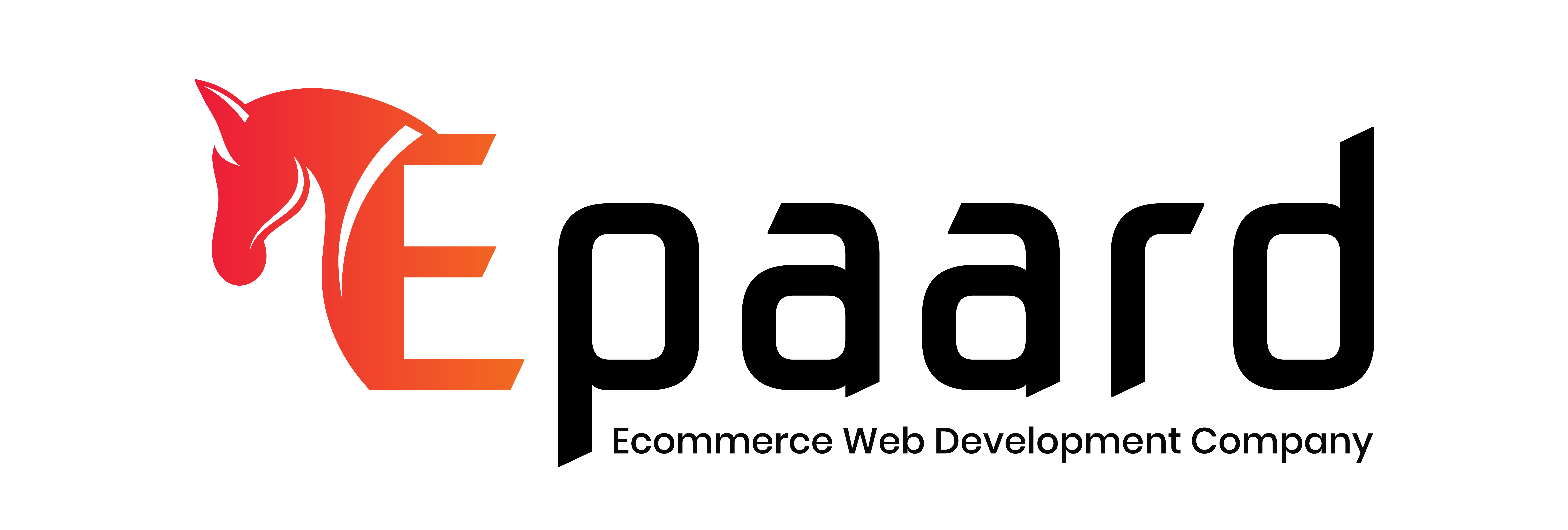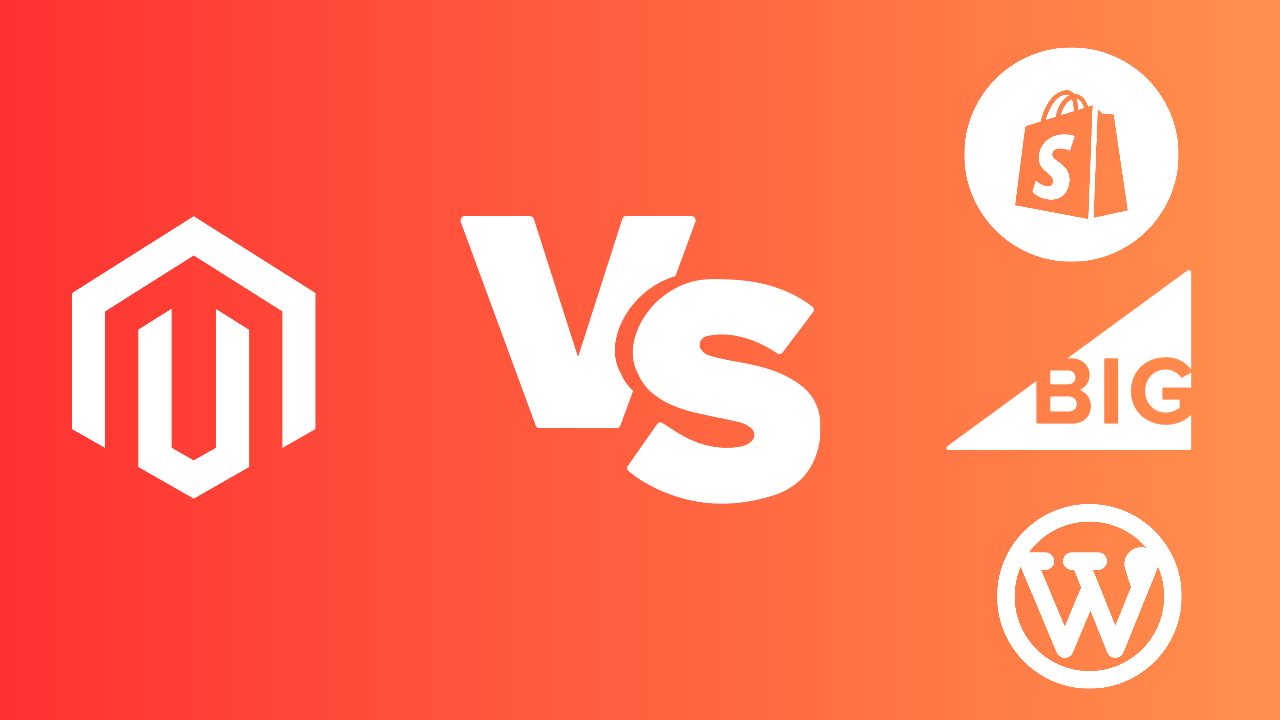Hey there, fellow shopaholics and budding e-commerce entrepreneurs! If you’re diving into the exciting world of online selling, you’ve probably heard the names Magento, Shopify, WooCommerce, and BigCommerce tossed around more than a beachball at a summer concert.
But with so many e-commerce platforms available, how do you choose the right one for your business? Fear not, my fellow digital merchants! In this article, we’re going to dive deep into the realm of e-commerce solutions and compare the heavyweights: Magento, Shopify, WooCommerce, and BigCommerce.
So grab a cup of coffee, kick back, and join me on this whirlwind tour of the pros and cons of each platform. By the time we’re done, you’ll be armed with enough knowledge to make an informed decision about which platform suits your online store’s needs best.
The Powerhouse – Magento
Let’s kick things off with the big gun in the e-commerce world – Magento. This platform is often the choice for large enterprises and businesses that require robust features and customization. But does it live up to the hype?
Strengths of Magento:
1. Unparalleled Customization: If you’re looking to create a unique and highly tailored online store, Magento is your go-to option. It offers a wide range of customization options, allowing you to build your store from the ground up.
2. Scalability: Magento can handle a massive volume of products and customers, making it ideal for large and growing businesses. It won’t break a sweat as your store expands.
3. SEO-Friendly: Magento is renowned for its SEO capabilities. It offers a range of features and extensions that can help boost your store’s visibility in search engine results.
Weaknesses of Magento:
1. Complexity: Magento’s immense power comes at a price – complexity. It’s not the most user-friendly platform, and setting up your store may require some technical expertise. You might need to hire developers for certain tasks.
2. Costly: The cost of hosting and maintaining a Magento store can be on the higher side, especially if you’re not a tech whiz. Additionally, many useful extensions come with a price tag.
3. Resource-Intensive: Magento demands substantial server resources to run efficiently. This means higher hosting costs and potential slowdowns if you skimp on server quality.
The E-commerce Giant – Shopify
If you’ve explored e-commerce platforms, you’ve undoubtedly come across Shopify. It’s like the friendly neighborhood grocery store of online selling – approachable, reliable, and always there when you need it.
Strengths of Shopify:
1. Ease of Use: Shopify is known for its user-friendliness. You don’t need a tech background to set up shop here. The intuitive interface guides you through the process.
2. Speed and Performance: Shopify’s cloud-based infrastructure ensures fast loading times, even during high traffic periods. This is crucial for retaining customers and improving SEO.
3. App Store: Shopify boasts a vast app store with various add-ons and extensions, allowing you to expand your store’s functionality easily.
Weaknesses of Shopify:
1. Limited Customization: While Shopify offers customization options, they are not as extensive as Magento. You may find it challenging to create a truly unique store design.
2. Transaction Fees: Unless you use Shopify Payments, you’ll be subject to transaction fees for each sale. These fees can add up, particularly for high-volume stores.
3. Subscription Costs: Although Shopify offers affordable plans, the more advanced features are available in higher-tier plans, which can be expensive for small businesses.
The WordPress Wonder – WooCommerce
If you’re a fan of WordPress (who isn’t?), WooCommerce might be your cup of tea. This plugin seamlessly integrates with your WordPress site, turning it into a fully functional e-commerce store.
Strengths of WooCommerce:
1. Familiar Interface: If you’re already familiar with WordPress, you’ll feel right at home with WooCommerce. It’s an excellent choice for bloggers and small businesses looking to expand into e-commerce.
2. Cost-Effective: WooCommerce itself is free, making it an affordable option for startups and budget-conscious entrepreneurs. You only pay for necessary extensions and hosting.
3. Community Support: The WordPress community is vast, and there’s a wealth of free resources and plugins available to enhance your WooCommerce store.
Weaknesses of WooCommerce:
1. Limited Features: Out of the box, WooCommerce has fewer features compared to dedicated e-commerce platforms like Magento or Shopify. You’ll likely need to install several plugins to match their capabilities.
2. Performance: As your store grows, you might experience performance issues. WooCommerce can become resource-intensive and may require advanced hosting solutions.
3. Security: WordPress sites, including WooCommerce, can be vulnerable to security threats if not properly maintained and secured.
The Underdog – BigCommerce
BigCommerce often flies under the radar, but it shouldn’t be underestimated. It offers a robust e-commerce solution with a unique set of strengths.
Strengths of BigCommerce:
1. Built-In Features: BigCommerce comes with a wide range of built-in features that are typically offered through third-party apps on other platforms. This can save you money and streamline your store’s operation.
2. Scalability: Like Magento, BigCommerce can handle high traffic and large product catalogs without breaking a sweat. It’s an excellent choice for growing businesses.
3. Mobile Responsiveness: BigCommerce templates are designed to be mobile-responsive, ensuring a seamless shopping experience for customers on smartphones and tablets.
Weaknesses of BigCommerce:
1. Pricing: While it’s not as expensive as Magento, BigCommerce isn’t the most budget-friendly option either. Smaller businesses might find the pricing a bit steep.
2. Learning Curve: The platform can be a bit daunting for newcomers. It may take some time to get used to its interface and functionality.
3. Transaction Fees: BigCommerce charges transaction fees on top of your payment gateway fees unless you opt for their more expensive plans.
Making the Right Choice
Now that we’ve dissected Magento, Shopify, WooCommerce, and BigCommerce, it’s time to make a decision. Which e-commerce platform is the right fit for your business?
1. Choose Magento if:
– You have a large enterprise with complex needs.
– Customization and scalability are your top priorities.
– You’re willing to invest in technical expertise and hosting.
2. Choose Shopify if:
– You’re a newbie looking for an easy-to-use platform.
– You value speed, reliability, and user-friendliness.
– You’re okay with transaction fees for non-Shopify Payments.
3. Choose WooCommerce if:
– You already have a WordPress site and want to add e-commerce.
– Budget-friendliness is essential, and you’re comfortable with DIY.
– You appreciate the support of the WordPress community.
4. Choose BigCommerce if:
– You want a comprehensive e-commerce solution with built-in features.
– Scalability is a concern for your growing business.
– You’re willing to pay a bit more for advanced features.
Design and Themes
Magento: Crafting a Unique Storefront
Magento offers a vast array of customizable themes and templates. If you have a unique vision for your online store’s appearance, Magento provides the tools to make it happen. However, this flexibility often requires design expertise or the hiring of a professional designer to fully exploit.
Shopify: Simplicity with Style
Shopify simplifies the design process with its user-friendly, drag-and-drop interface. While it provides an excellent selection of themes, the level of customization might not satisfy those seeking a truly distinctive look. You’ll find more design freedom in the paid themes.
WooCommerce: A Blend of Functionality and Aesthetics
WooCommerce integrates seamlessly with WordPress, which means you have access to thousands of free and paid WordPress themes. This flexibility allows you to achieve a personalized look for your online store. If you’re already using a WordPress theme you love, WooCommerce can effortlessly complement it.
BigCommerce: Striking Templates with Built-In Features
BigCommerce offers stunning, mobile-responsive templates that come with a variety of built-in features. While customization options exist, they might not be as extensive as Magento’s. However, for businesses seeking an attractive, feature-rich storefront without extensive design work, BigCommerce is an excellent choice.
Payment Processing and Fees
Magento: Tailored Payment Solutions
Magento allows you to integrate with various payment gateways, offering a high degree of flexibility. However, it’s essential to note that transaction fees and payment processing costs are not set by Magento but by the payment gateway provider you choose.
Shopify: Built-In Payment Solutions
Shopify comes with its payment gateway, Shopify Payments, which eliminates the need for third-party gateways and their associated transaction fees. However, if you opt for other gateways, you’ll incur transaction fees in addition to Shopify’s subscription costs.
WooCommerce: Flexible Payment Options
WooCommerce provides a wide range of payment gateway extensions, allowing you to choose the one that suits your business best. It also integrates smoothly with PayPal and Stripe. Keep in mind that transaction fees depend on your chosen gateway.
BigCommerce: Competitive Payment Processing
BigCommerce integrates with various payment gateways and offers competitive credit card processing rates. Depending on your plan, you might or might not incur transaction fees.
SEO and Marketing Tools
Magento: SEO Powerhouse
Magento’s extensive range of built-in and third-party SEO tools makes it a dominant force in this category. It offers features like customizable URL structures, meta tags, and sitemaps, all geared toward boosting your search engine rankings.
Shopify: SEO-Friendly
Shopify provides an SEO-friendly platform, but it’s not as robust as Magento. You can optimize titles, meta descriptions, and alt tags for images. It also offers tools like canonical tags and automatic sitemap generation.
WooCommerce: Leverage WordPress SEO
Since WooCommerce integrates seamlessly with WordPress, you can tap into the powerful SEO capabilities that WordPress offers. Popular SEO plugins like Yoast can further enhance your store’s visibility.
BigCommerce: Comprehensive SEO Features
BigCommerce provides a variety of SEO features, including customizable URL structures, automatic sitemaps, and integration with Google Shopping. It also offers options for handling redirects, which can be crucial when restructuring your website.
Customer Support and Community
Magento: For Enterprises with Deep Pockets
Magento offers various support options, including a community forum and paid support plans. However, the latter can be expensive, which might be more suited to large enterprises than smaller businesses.
Shopify: Support When You Need It
Shopify’s support is known for being responsive and helpful. They offer 24/7 customer support via chat, email, and phone for most subscription plans. The extensive Shopify community also provides ample resources and advice.
WooCommerce: DIY with Community Help
Since WooCommerce is part of the WordPress ecosystem, you can rely on the vast WordPress community for support. While it doesn’t have dedicated customer support, you’ll find numerous forums, tutorials, and third-party plugins to assist you.
BigCommerce: Comprehensive Support
BigCommerce offers various levels of support, including 24/7 customer service for higher-tier plans. They also have a community forum and an extensive knowledge base. However, smaller businesses might find their pricing less accessible.
Integrations and Add-Ons
Magento: Extensive Ecosystem
Magento boasts a thriving marketplace with thousands of extensions and integrations. This allows you to tailor your online store with specialized features, but be prepared for potential compatibility issues and additional costs.
Shopify: App Store Galore
Shopify’s App Store offers a vast selection of plugins and extensions to extend your store’s functionality. It’s user-friendly, but like Magento, costs can add up if you rely heavily on third-party apps.
WooCommerce: WordPress Plugin Paradise
WooCommerce taps into the vast WordPress plugin ecosystem, granting access to a plethora of third-party integrations. Many of these are free, making it a cost-effective choice for small businesses.
BigCommerce: Built-In Features
BigCommerce shines in this area, as many advanced features are built into the platform, reducing the need for extensive third-party integrations. This can save you money and reduce potential compatibility issues.
Security and Compliance
Magento: Robust Security Measures
Magento takes security seriously, offering features like secure payment processing and data encryption. However, due to its complexity, it’s essential to keep your platform and extensions up-to-date to avoid vulnerabilities.
Shopify: Secure and Reliable
Shopify provides a secure hosting environment, relieving you of most security concerns. It’s also PCI DSS compliant, which is crucial for handling sensitive customer data.
WooCommerce: Security Depends on Hosting
WooCommerce’s security largely relies on the hosting provider you choose. Ensure you select a reputable host that offers security features like SSL certificates and regular backups.
BigCommerce: Security Features Included
BigCommerce includes security features like DDoS protection, fraud monitoring, and automatic security updates, reducing the need for additional security measures.
Conclusion
So there you have it, shopaholics and aspiring e-commerce tycoons! Choosing the right e-commerce platform is like selecting the perfect pair of shoes – it needs to be the right fit for your business. Consider your needs, budget, and technical expertise before making your decision.
Magento, Shopify, WooCommerce, and BigCommerce all have their strengths and weaknesses. It’s up to you to weigh them against your specific requirements. Happy selling, and may your online store flourish in the digital marketplace!



